rr <- ranef(fm1) ## condVar = TRUE has been the default for a while
With as.data.frame: gives the conditional mode and SD, from which you can calculate the intervals (technically, these are not "confidence intervals" because the values of the BLUPs/conditional modes are not parameters ...)
dd <- as.data.frame(rr)
transform(dd, lwr = condval - 1.96*condsd, upr = condval + 1.96*condsd)
Or with broom.mixed::tidy:
broom.mixed::tidy(m1, effects = "ran_vals", conf.int = TRUE)
broom.mixed::tidy() uses as.data.frame.ranef.mer() (the method called by as.data.frame) internally: this function takes the rather complicated data structure described in ?lme4::ranef and extracts the conditional modes and standard deviations in a more user-friendly format:
If ‘condVar’ is ‘TRUE’ the ‘"postVar"’
attribute is an array of dimension j by j by k (or a list of such
arrays). The kth face of this array is a positive definite
symmetric j by j matrix. If there is only one grouping factor in
the model the variance-covariance matrix for the entire random
effects vector, conditional on the estimates of the model
parameters and on the data, will be block diagonal; this j by j
matrix is the kth diagonal block. With multiple grouping factors
the faces of the ‘"postVar"’ attributes are still the diagonal
blocks of this conditional variance-covariance matrix but the
matrix itself is no longer block diagonal.
In this particular case, here's what you need to do to replicate the condsd column of as.data.frame():
## get the 'postVar' attribute of the first (and only) RE term
aa <- attr(rr$Subject, "postVar")
## for each slice of the array, extract the diagonal;
## transpose and drop dimensions;
## take the square root
sqrt(c(t(apply(aa, 3, diag))))
